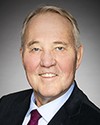Madam Speaker, I would like to begin by acknowledging the member for Desnethé—Missinippi—Churchill River for her tireless advocacy on behalf of her constituents, and for her tireless work in reminding this House about the importance of our support for that community and indigenous communities right across Canada.
Our government was elected with a mandate to renew the relationship between Canada and indigenous peoples. We are moving forward and away from the previous government's style of relations with first nations. We have committed to implementing the Truth and Reconciliation Commission recommendations. Our government recognizes that addressing mental health and wellness issues are important priorities for indigenous communities.
Providing mental health services is a shared undertaking by federal, provincial, and territorial governments. Our government supports first nations and Inuit community mental wellness through a number of programs and services, including activities aimed at mental health promotion, suicide prevention, addictions treatment, after-care services, counselling, and other crisis response services, as well as supports to former students of Indian residential schools and their families.
The goal of these programs is to provide first nations and Inuit individuals and communities with culturally appropriate mental wellness services and supports that are responsive to their needs. We are investing $271.3 million in 2016-17 for these programs and services. This amount includes $13.5 million annually for the national aboriginal youth suicide prevention strategy, which supports 138 community-based suicide prevention projects in first nations and Inuit communities.
In addition to community-based mental wellness programs and services, the non-insured health benefits program provides access to mental health counselling benefits to eligible first nations and Inuit individuals. This demand-driven benefit is often used to deploy additional professional resources in communities when there is a need for surge capacity.
This program has a list of registered mental health professionals who can supply support when there is a need that exceeds the local capacity. In 2015-16, expenditures amounted to $16.2 million for mental health counselling within this program. Building on best practices, we know that the support provided to individuals, families, and communities should be culturally safe and community-driven. Lasting solutions require work with our partners, including first nations and Inuit organizations and, most importantly, with the communities themselves.
Health Canada, the Assembly of First Nations, and indigenous mental wellness leaders co-developed the first nations mental wellness continuum framework. Through this process, communities were engaged, and brought their ideas to the table. Culture emerged as foundational.
Community innovation, partnerships across government, collaboration and coordination across sectors, and linkages between programs and services were also identified as being crucial for moving forward. This framework has been ratified by the Assembly of First Nations' chiefs.
Health Canada is a partner in implementing the framework, which calls for integrated models of service delivery that focus on community strengths and indigenous knowledge. This framework is guiding our efforts and investments in mental wellness for first nations communities moving forward.
We are also now working with the Inuit Tapiriit Kanatami to develop a mental wellness continuum framework for Inuit people, expected to be completed during this fiscal year. It will support an Inuit-specific approach to mental wellness.
Strategies to prevent suicide and improve mental health for first nations and Inuit need to be developed, planned and managed in partnership with first nations and Inuit. Our government remains committed to working with indigenous leaders at the national and regional levels to ensure we have strategies that are grounded in culture, based on evidence, including indigenous evidence, and where first nations and Inuit play a central role in defining the goals, planning the approach, and managing the services.
This approach recognizes that there are distinct differences between and among indigenous peoples and communities, and is respectful of their unique needs, cultures—

